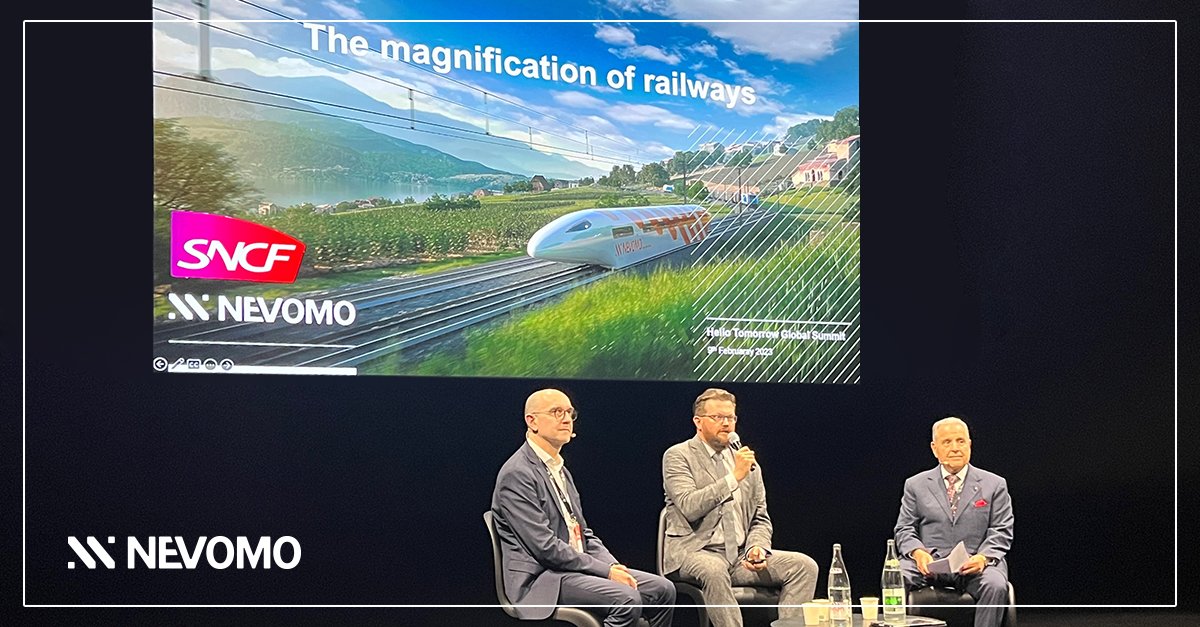Nevomo and SNCF to use MagRail to boost freight capacity in France

Pioneer of maglev-inspired technology for existing railways Nevomo has signed a Memorandum of Understanding (MoU) with the French state railways SNCF. The companies will evaluate the benefits of MagRail within the French railway network to increase the efficiency and capacity of freight and passenger transport.
“We are therefore pleased to sign this MoU, which will cover three areas: increasing the performance of current freight trains for higher loading limits and more capacity on our freight lines, boosting the capacity on congested urban passenger lines, and evaluating MagRail as an alternative propulsion system for rural lines in combination with lightweight vehicles”.
After signing a cooperation agreement with Italian infrastructure manager RFI in 2021, Nevomo continues to make progress, now establishing a cooperation with the French railways SNCF. “We have noticed the high technicality of Nevomo and consider that the proposed technologies are likely to advance the railway”, says Luc Laroche, Innovation director at SNCF.

How does MagRail work?
MagRail is a concept developed by Nevomo, and is a hybrid solution that allows for the functionality of both a magnetic levitation (maglev) system and conventional trains on the same, existing railway tracks. In other words, Nevomo is working on a magnetic propulsion technology that can be considered a traction enhancer, which has been unheard of until now. When it comes to rail freight, as Nevomo CBDO Stefan Kirch pointed out, speed is not necessarily the most important factor when compared to frequency, capacity, and reliability.
MagRail is based on passive magnetic levitation, where the levitation of the vehicle is achieved automatically through the movement of the vehicle after achieving a certain speed. A linear motor, which is placed in the middle of the railway track, provides the propulsion for special vehicles, which could run in between regular trains. MagRail also provides the possibility to operate electric vehicles in non-electrified areas, such as terminals and ports, for which it earlier signed a cooperation agreement with the German Duisport.
Exploring the railway of the future
“On the research side, this MoU is part of the collaborative actions that we carry out with innovative ecosystems to feed our scientific watch and allow us to identify emerging technologies to explore for the railways of the future.”, says David De Almeida, director for Research at SNCF. The first demo version of MagRail on a 1:5 scale was presented by Nevomo in 2019. Successful mid-size tests were conducted in December 2020. Last year, Nevomo completed the construction of the full-scale test track in Nowa Sarzyna in Poland, which is Europe’s longest track for testing passive magnetic levitation.
“Being able to announce the cooperation publicly in Paris at the “Hello Tomorrow Global Summit” together with our partner SNCF, is undoubtedly the best confirmation of the credibility of our technology we can get from the market and a confirmation of the huge need for this type of mobility solution. We are very excited to collaborate and evaluate the chosen applications to support SNCF’s goals”, says Przemek Ben Paczek, CEO and Co-founder of Nevomo.
This article was originally published on our sister publication RailTech.com
Also read:





Regardless which…, the old railways… – in the mean time – for sustainably proving high quality – the now needed… -, has to add resiliency and redundancy (as all other, sustainable modes)…
“State of the art”,railway standard, installed at TEN-T etc., unnecessarily, for Industry – and for all – is “cementing” (as vulnerable and even worse, not upgradable) – accordingly, now, except for a minority, severely devastating.